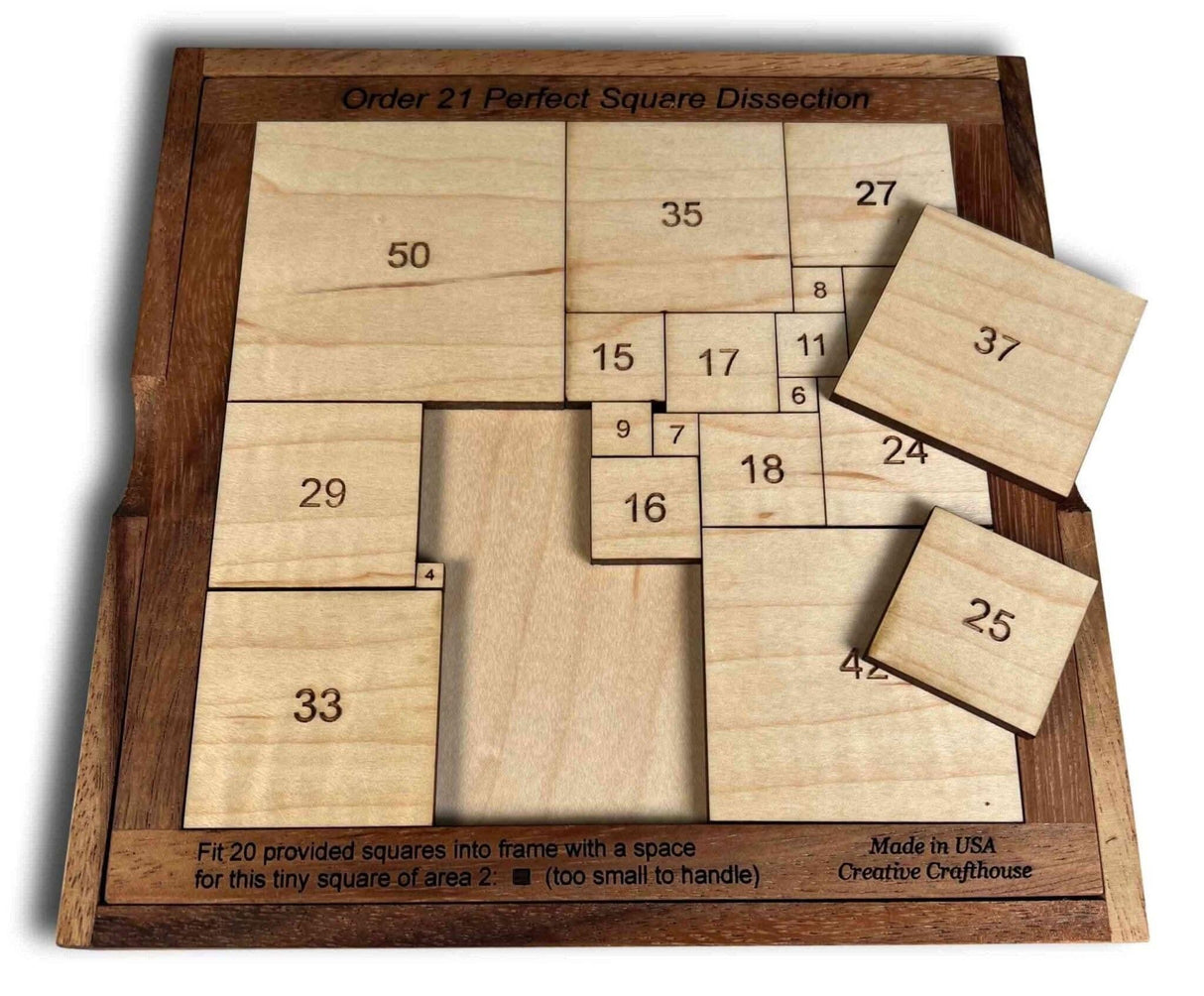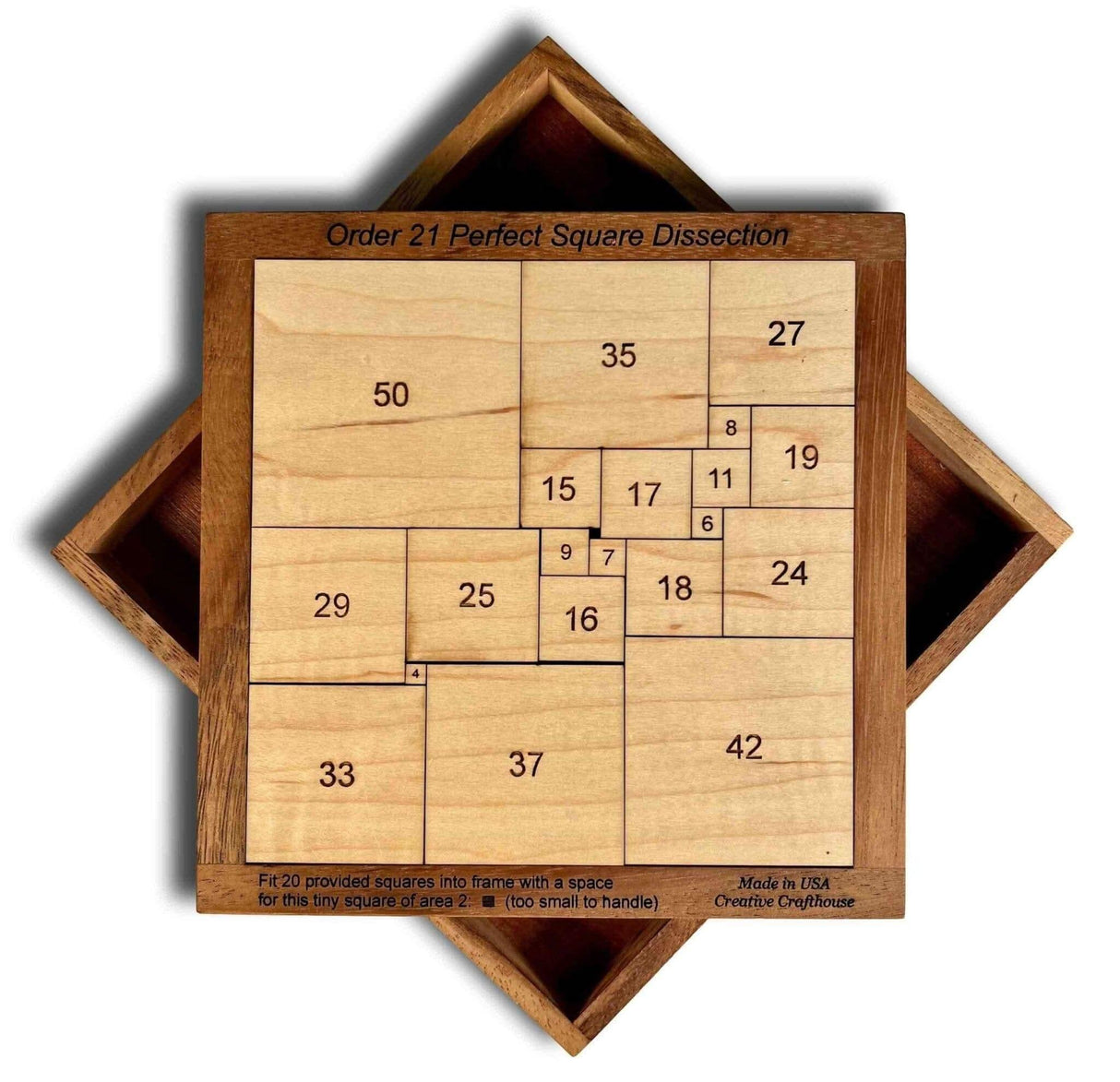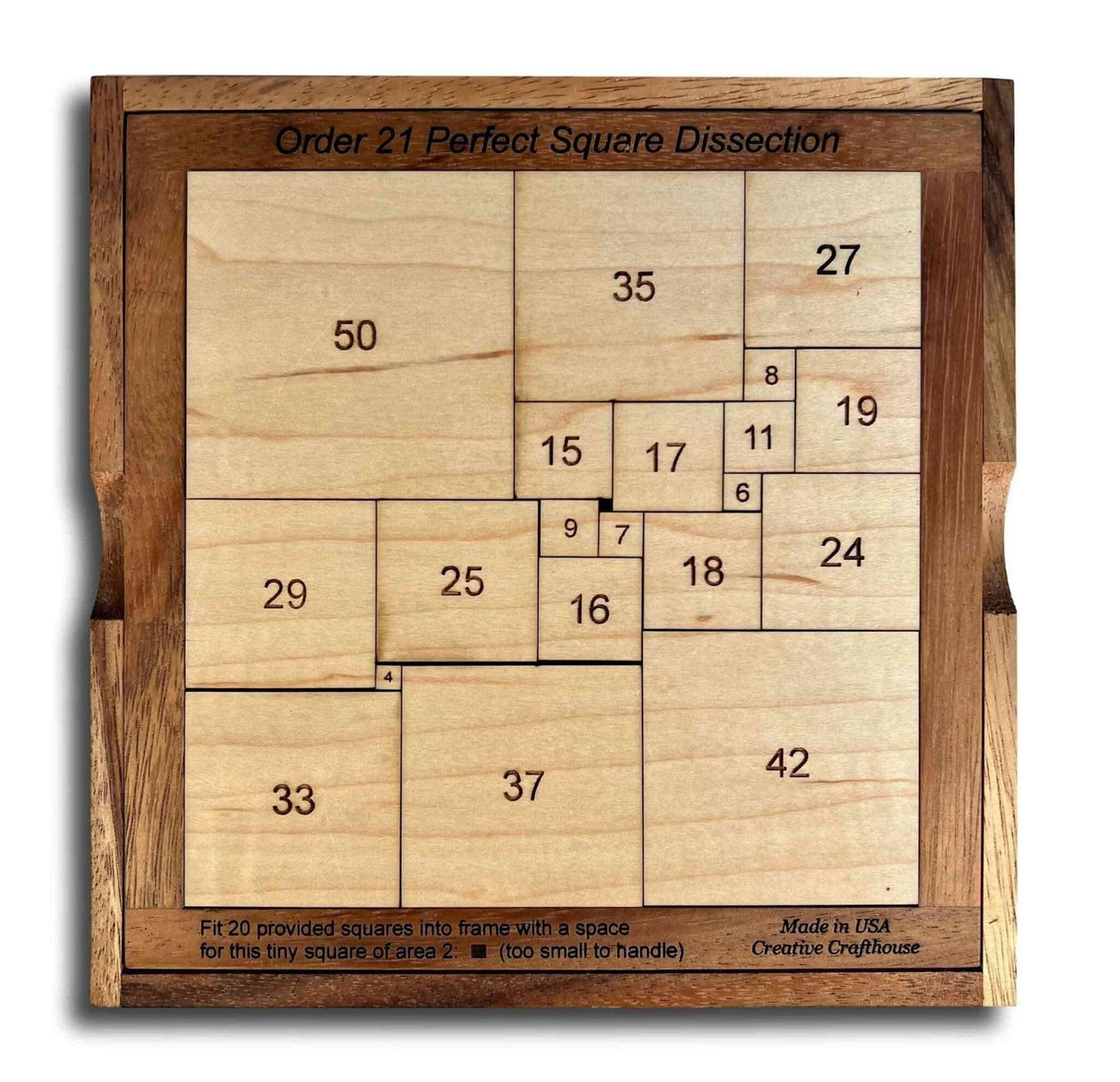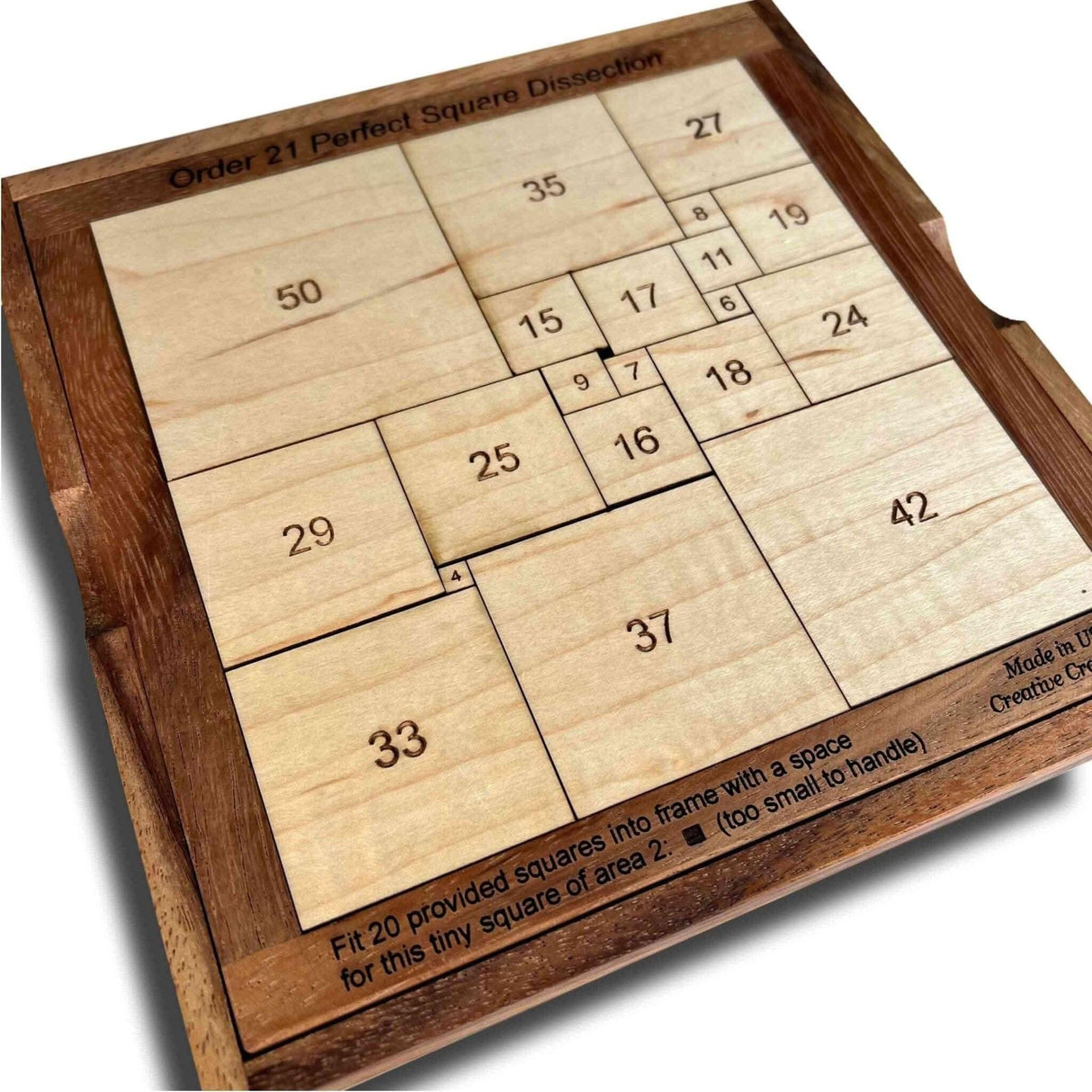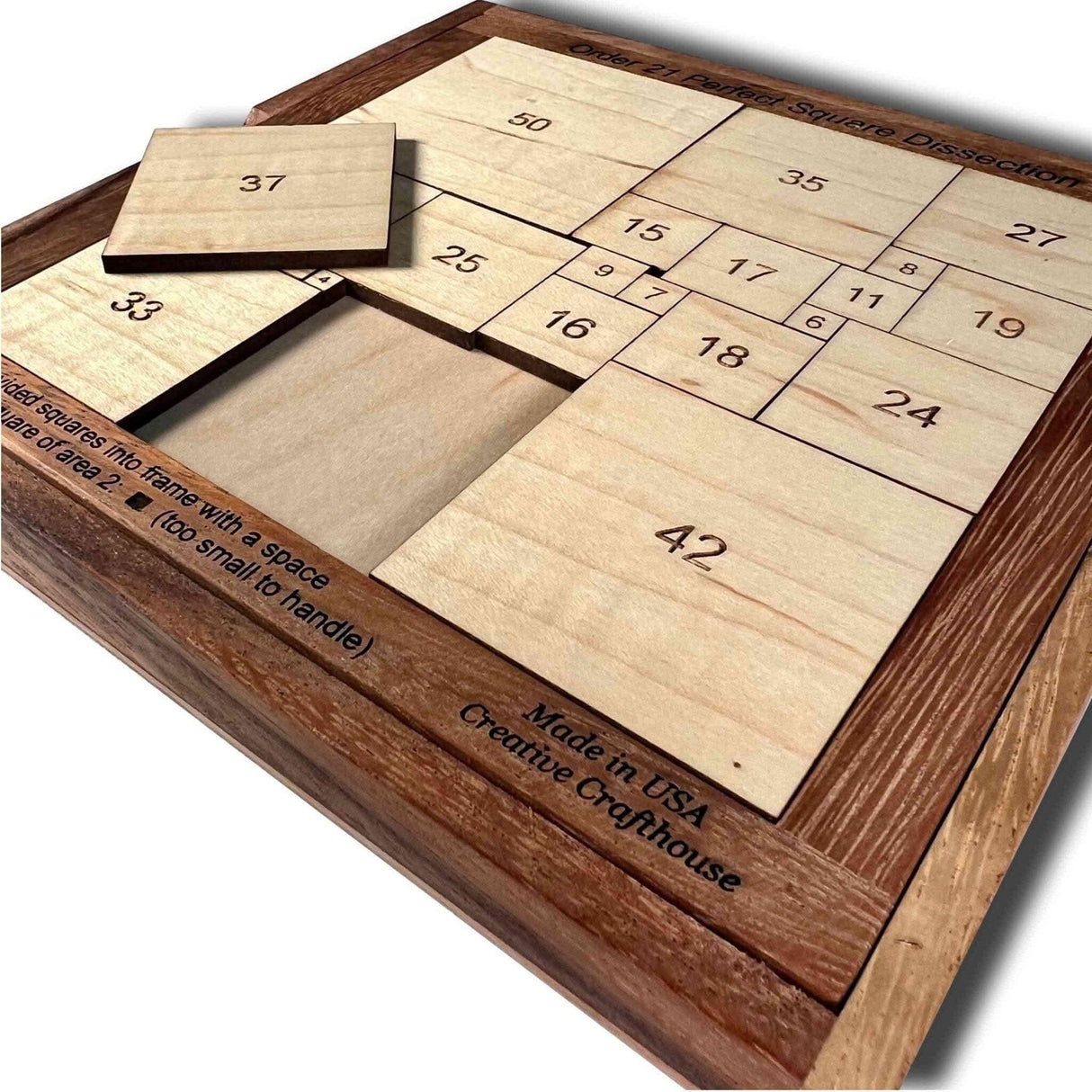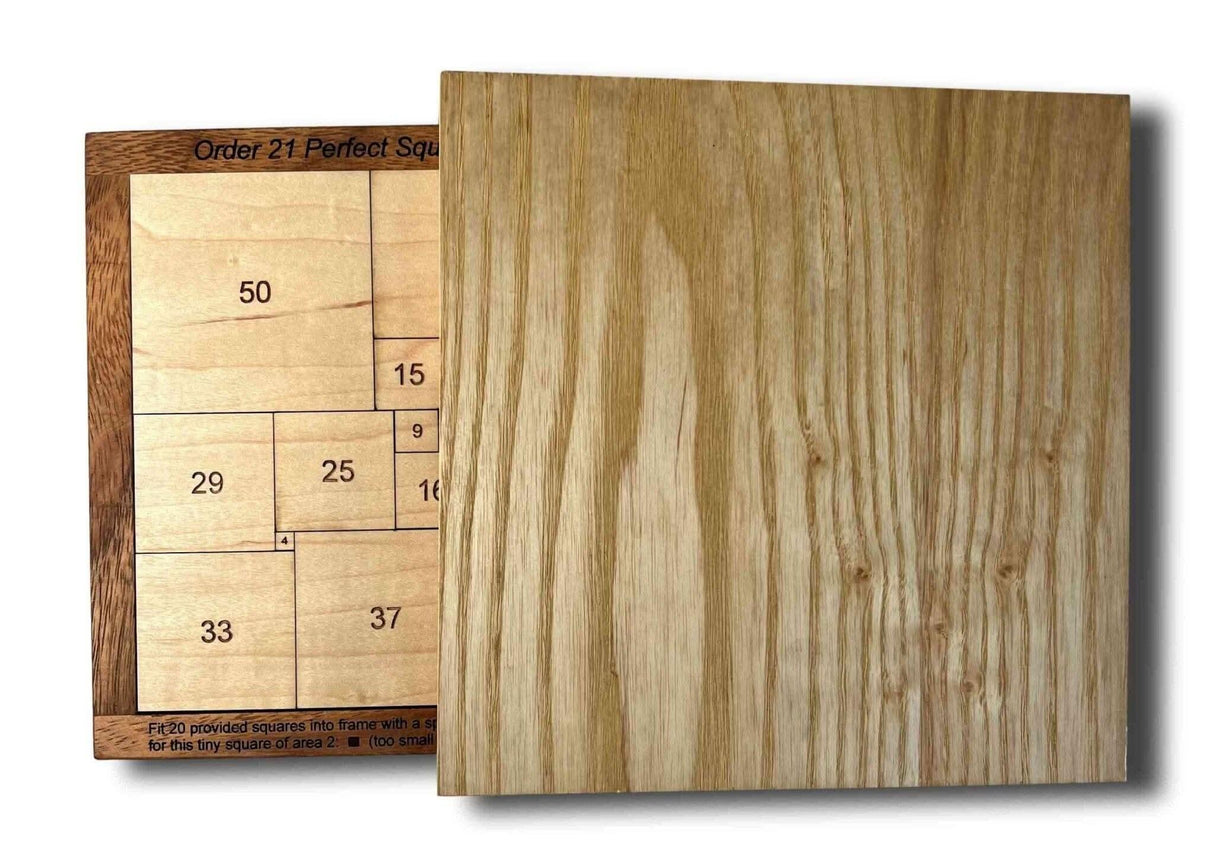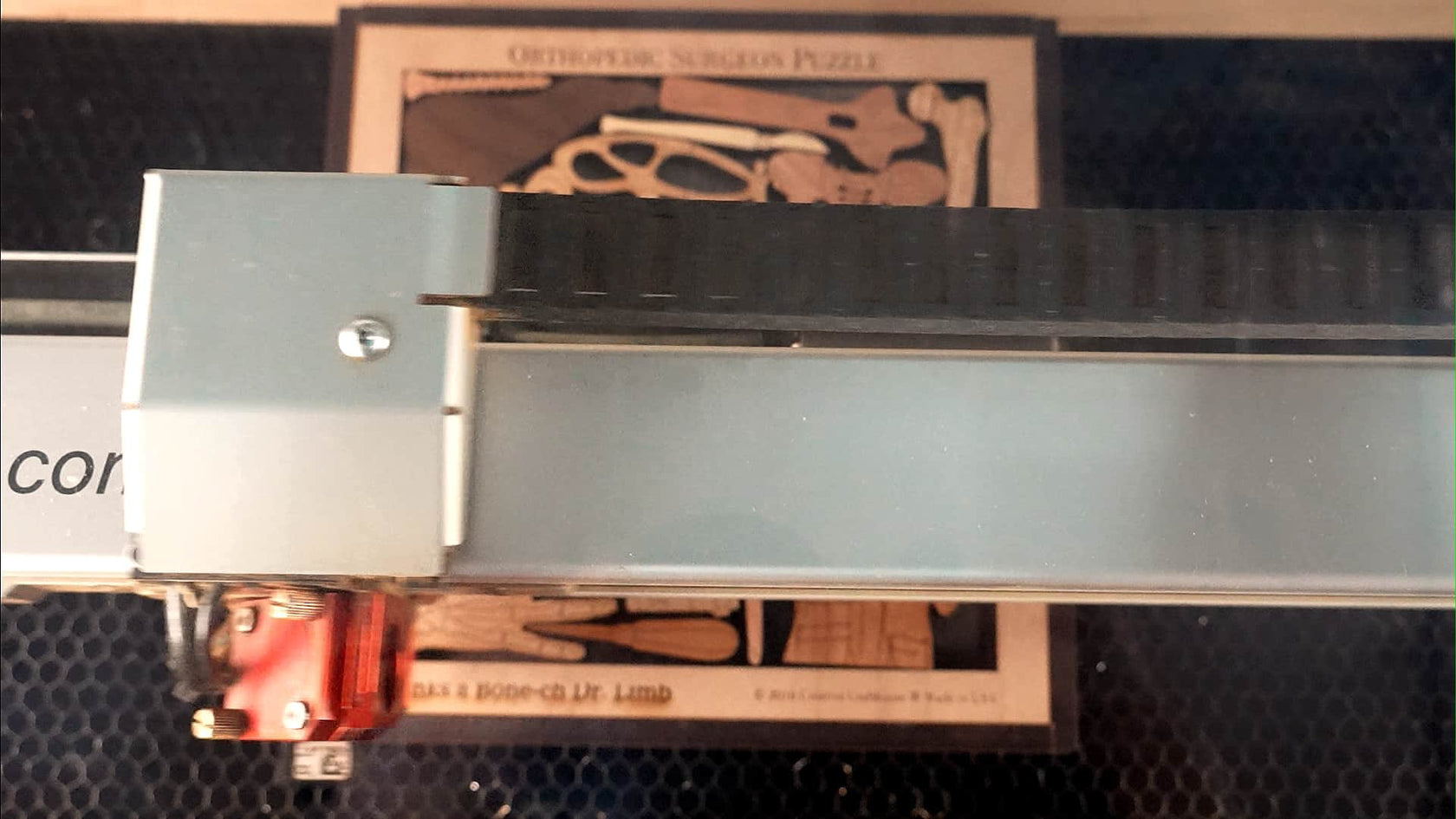Order 21 Perfect Square Puzzle | Mathematical Brain Teaser
Order 21 Perfect Square Puzzle | Mathematical Brain Teaser is backordered and will ship as soon as it is back in stock.
Couldn't load pickup availability
Delivery and Shipping
Delivery and Shipping
All standard orders normally ship within 1 business day.
Custom orders normally ship within 2 business days.
Description
Description
Discover the beauty of geometric dissections with the Order 21 Perfect Square Puzzle. Based on a groundbreaking mathematical discovery by A. J. W. Duijvestijn in 1978, this unique puzzle challenges you to arrange 20 wooden squares inside a frame, leaving an opening for the smallest 21st square, which is laser-engraved on the frame.
A Historic Mathematical Challenge
This puzzle represents the only known perfect square dissection of order 21, an important mathematical achievement. It provides an engaging way to explore geometry, logic, and spatial reasoning.
Premium Handcrafted Design
- Made from high-quality hardwood for durability and a beautiful finish.
- Laser-etched precision ensures each piece fits perfectly.
- Frame size: The completed puzzle forms a square with a side length of 112 units.
Who Will Love This Puzzle?
- Math Enthusiasts: A must-have for those fascinated by geometric dissections.
- Puzzle Lovers: A unique and rewarding challenge for serious solvers.
- Educators & Students: A hands-on tool for teaching math and logic in an interactive way.
Why Choose This Puzzle?
- Educational Value: Encourages critical thinking and problem-solving skills.
- Historical Significance: Based on the only known perfect square dissection of order 21.
- Great Gift Idea: Ideal for puzzle collectors, math teachers, and anyone who loves a challenge.
Made in the USA
Designed and handcrafted by Creative Crafthouse in Hudson, FL.
Personalize it!
Personalize it!
Click YES above the quantity selector to add a personalized laser engraving to your puzzle or game.
- Perfect for gifts
- Business marketing opportunity
Recommended age group
Recommended age group
Difficulty level
Difficulty level
Payment & Security
Payment methods
Your payment information is processed securely. We do not store credit card details nor have access to your credit card information.
Personalize It!
Did you know we can add a custom laser engraving to every puzzle and game? Well, we can. Add a personal touch to your gift with a name or message.
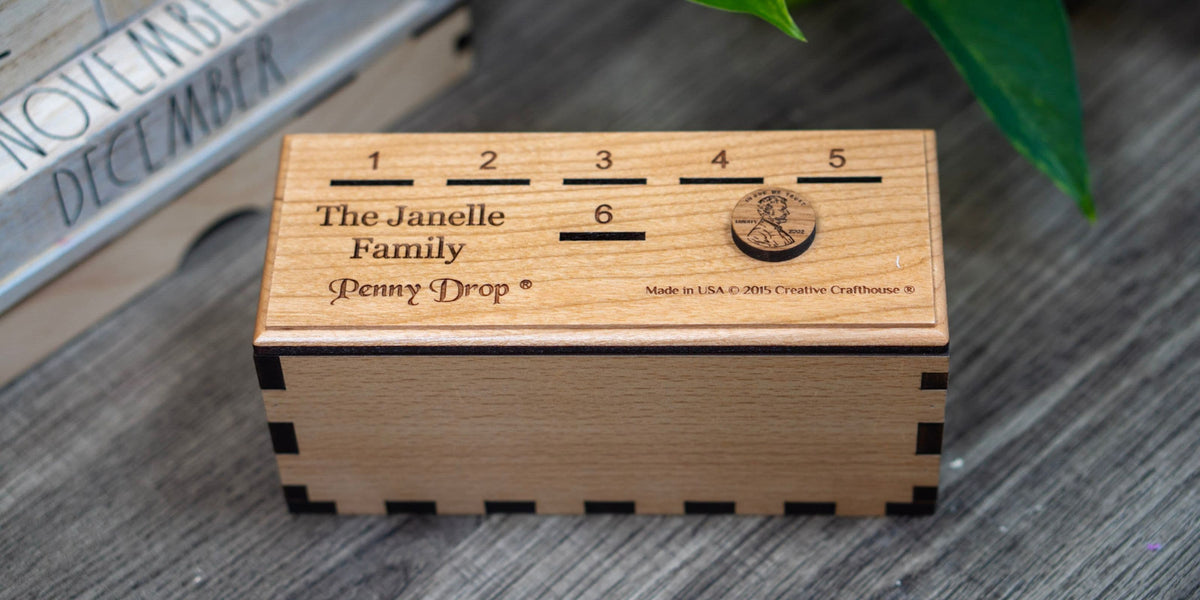
Collections for you
Frequently Asked Questions
Shipping
What countries do you ship to?
What countries do you ship to?
We ship all around the world. If you encounter an issue at checkout, please use the Chat Box to contact us. A real person will assist you.
How long will it take to receive my order?
How long will it take to receive my order?
Standard shipping normally takes 3-5 days. Next-day shipping is available on all domestic orders (for an additional charge). International shipping times vary depending on the product and destination (estimated at checkout).
Expedited shipping is available at checkout.
Returns and Refunds
How do I return a product?
How do I return a product?
Items must be returned within 30 days after receiving your order. Items must be returned in the same condition in which they were received, be unworn/unused, have any tags still attached, and include all the original packaging.
Custom/Personalized items can only be returned if we made a mistake on the customization/engraving.
How long will it take to receive my refund?
How long will it take to receive my refund?
Refunds are processed within 7 days from when we receive the item(s).
